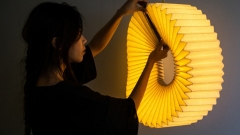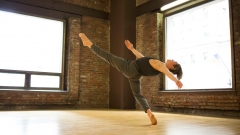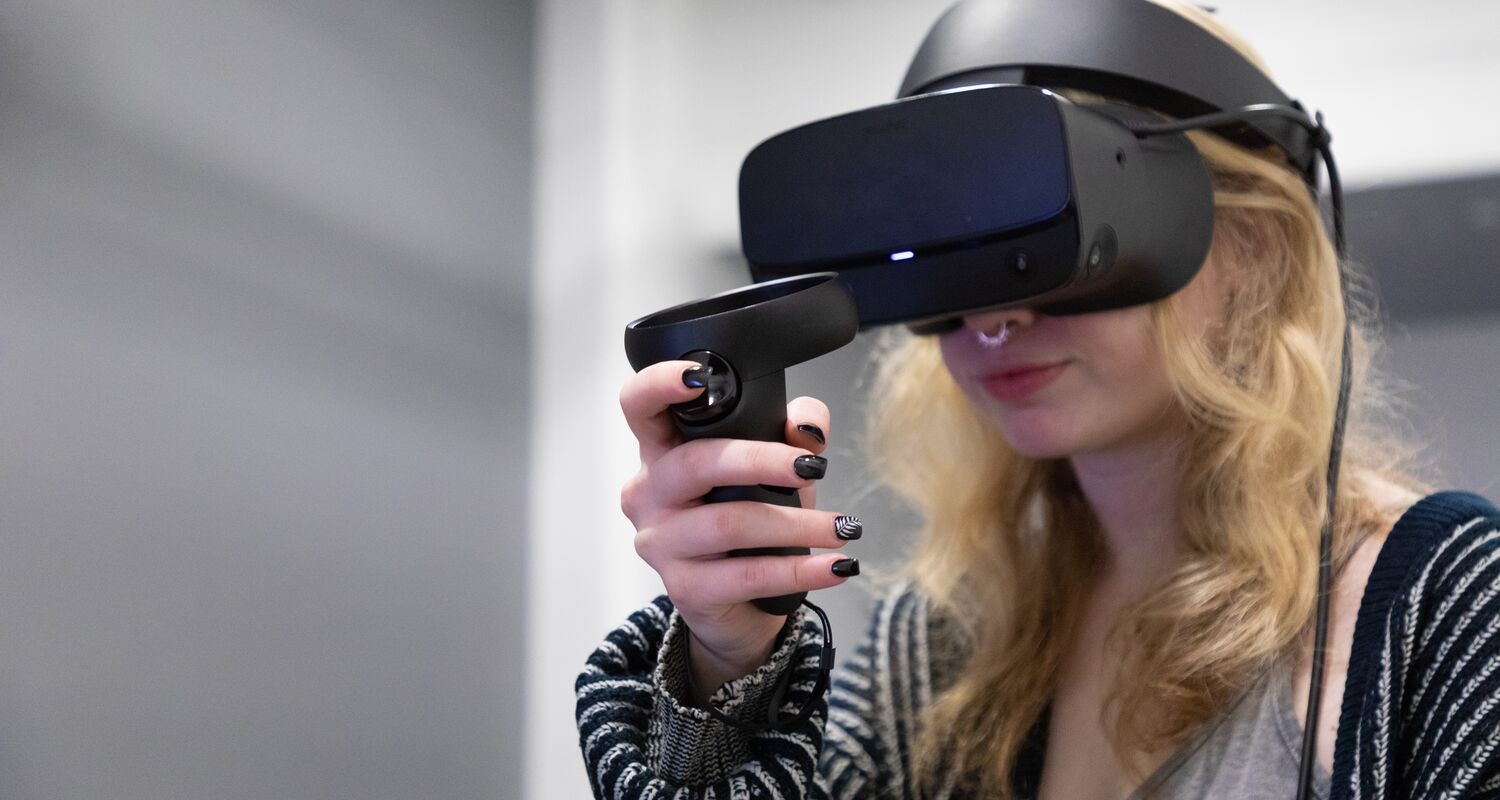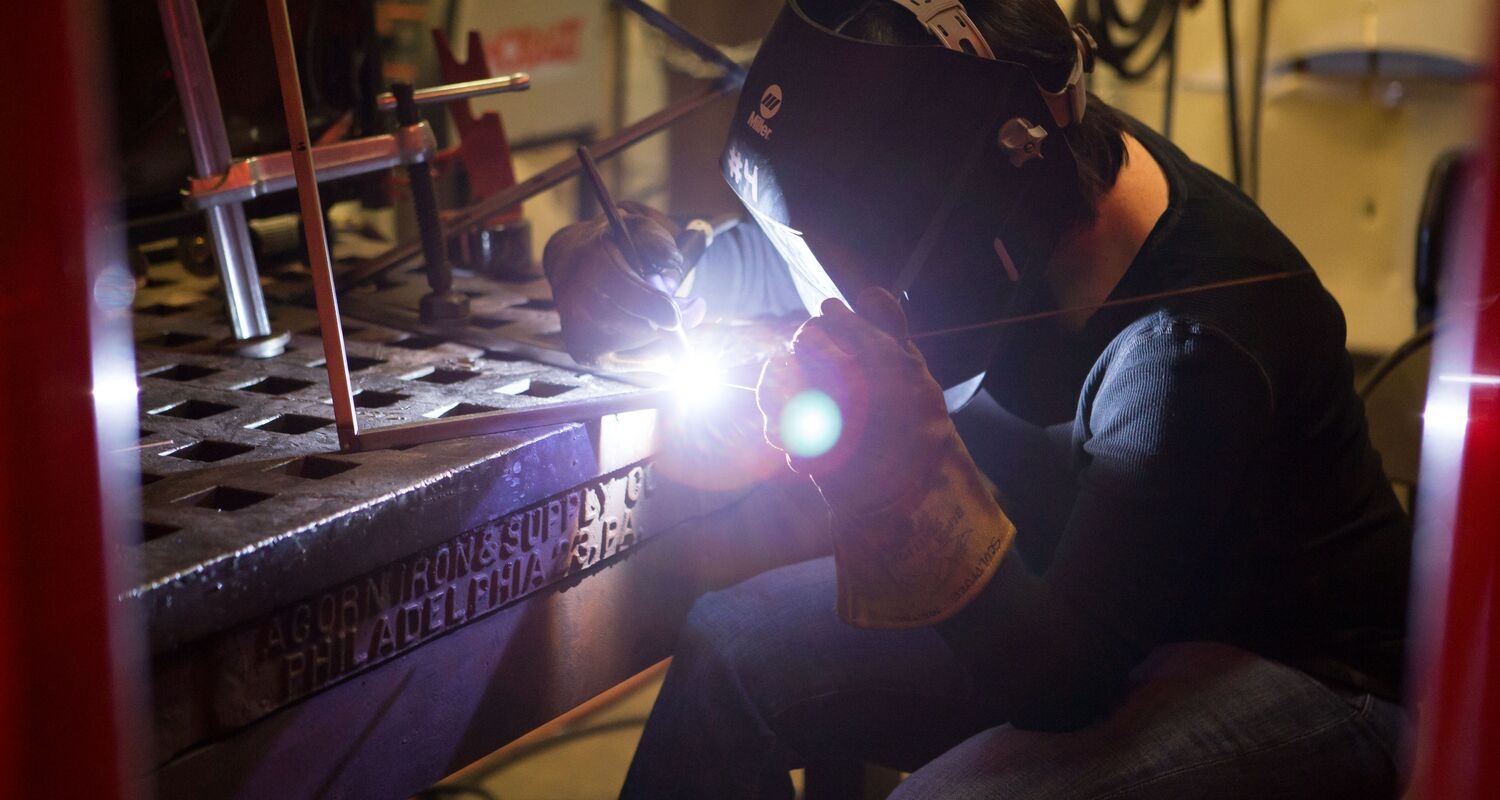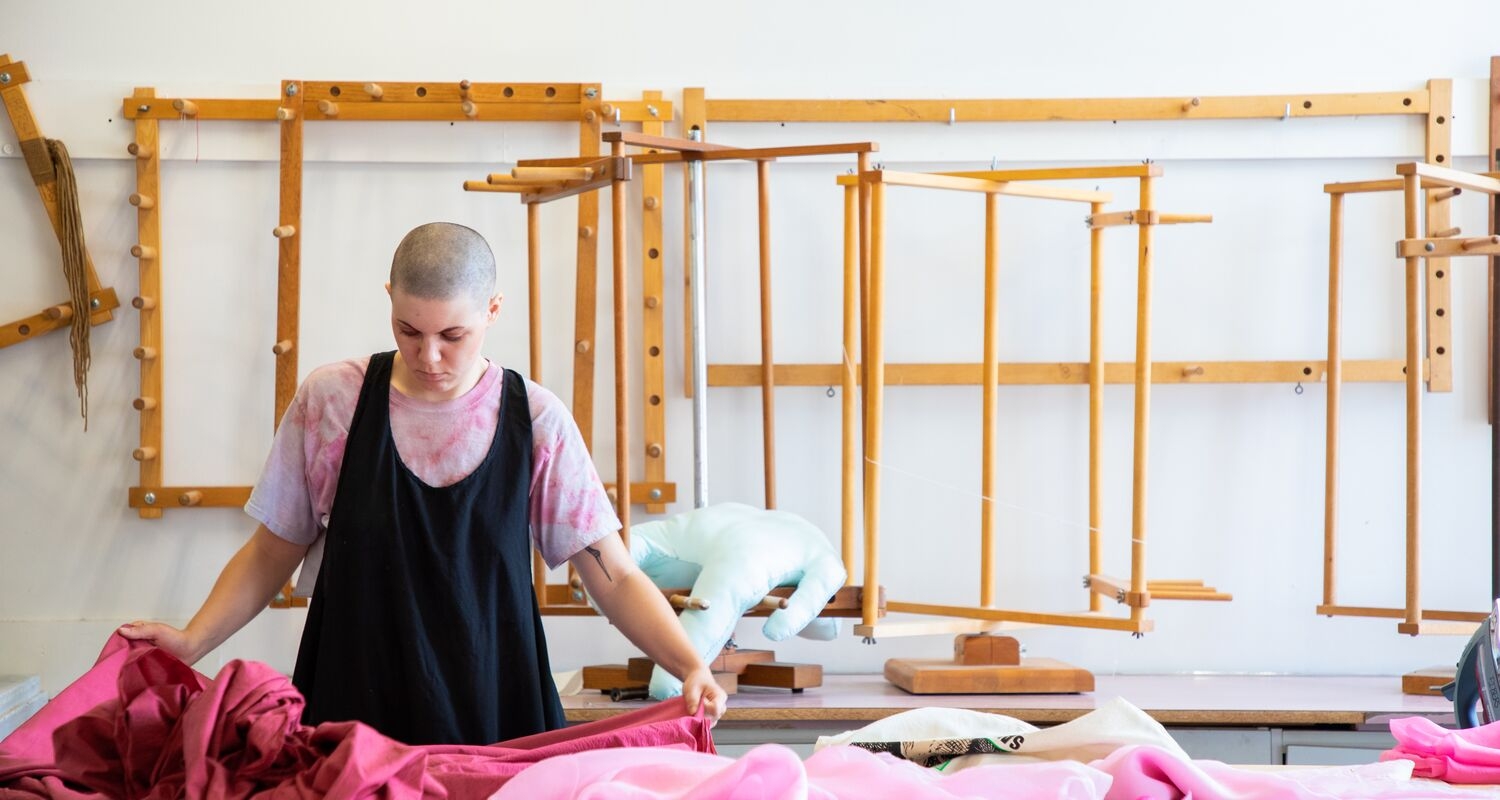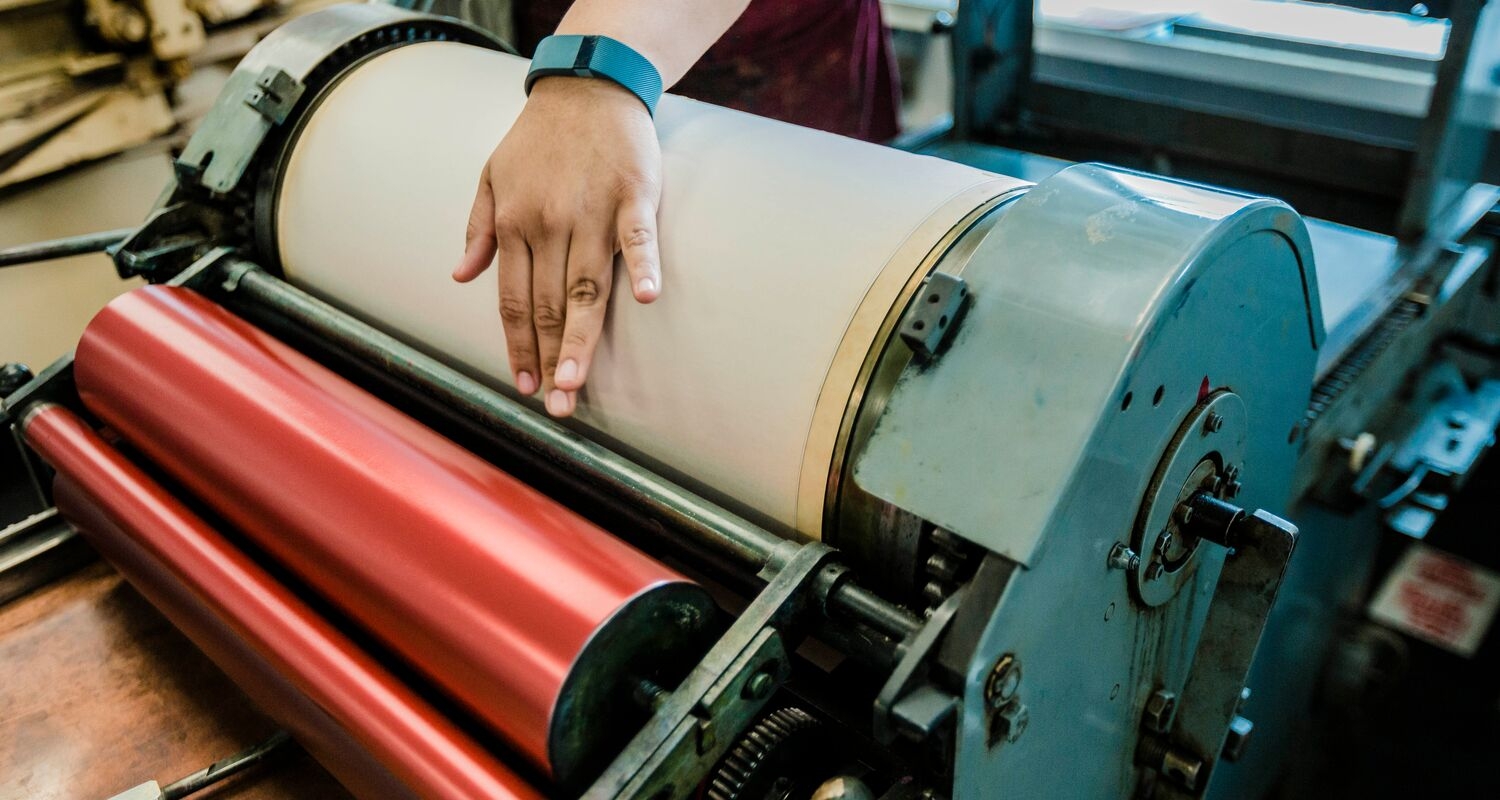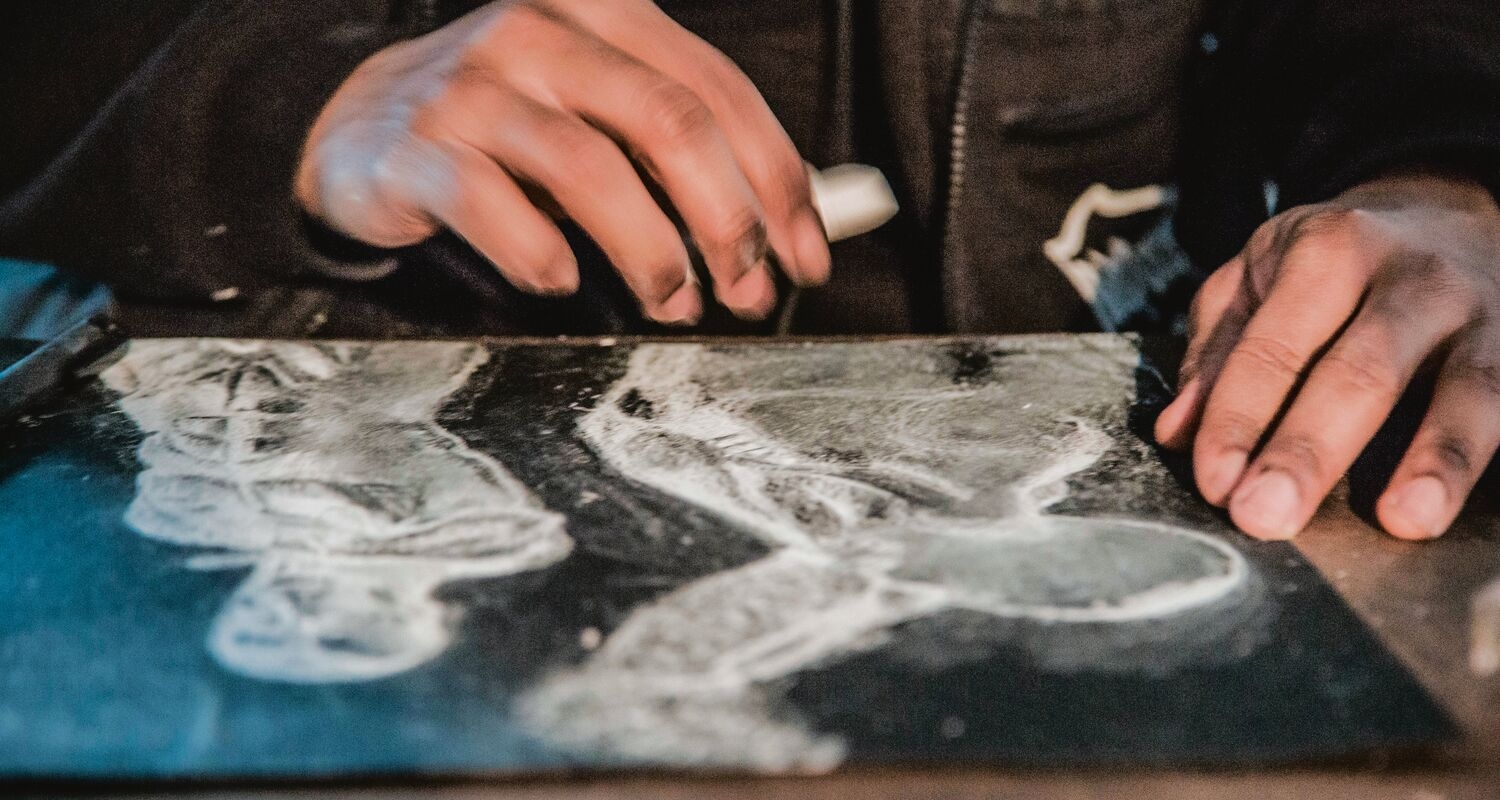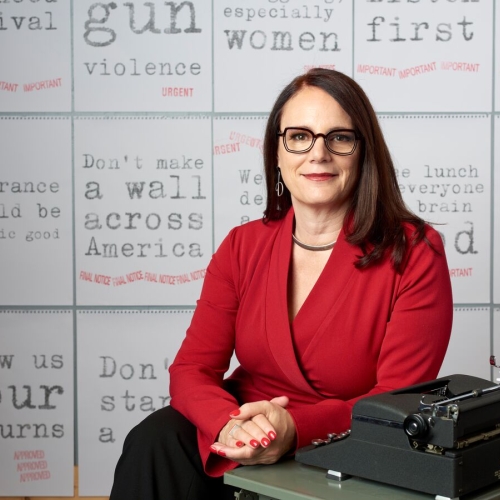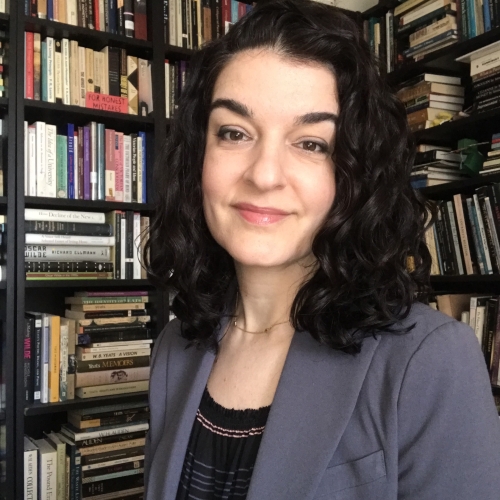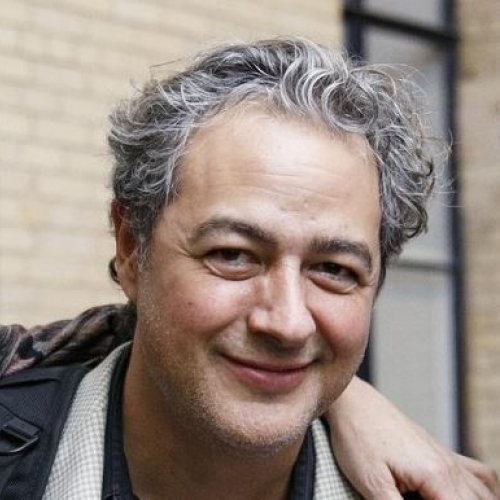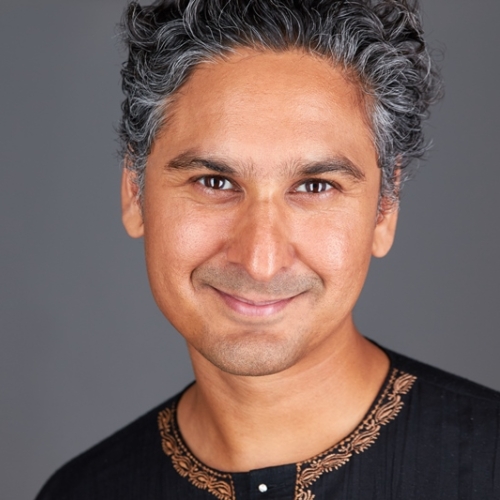Art BFA (interdisciplinary)
University of the Arts’ BFA program in Art in the School of Art is a flexible, interdisciplinary major that allows you to push traditional boundaries of artistic practice, determine your own path and prepare for a career in the arts. You may keep creative avenues open as you explore visual media, creative writing, immersive installation methods or technical processes. Courses in drawing, printmaking, painting, photography, sculpture, ceramics, woodworking, fibers, jewelry, poetry and fiction writing, among others, provide a locus for your unique skill- and concept-based inquiries. In addition, you may take advantage of the courses offered in the university’s new Makerspace, such as Digital Fabrication.
Alongside a robust studio practice, you will have the opportunity to immerse yourself in art history courses, like African American Art or Women Artists, as well as classes in Critical Studies that tackle subjects like gender theory and ecocriticism. You may study a diverse range of lesser-known artists as well as some familiar favorites and broaden your arts education.
By prioritizing your interests and critical thinking, the BFA in Art gives you the freedom to shape your distinct artistic voice and helps you strengthen your self-expression, establish a meaningful interdisciplinary creative practice, and enter the contemporary art world where many artists draw from a mix of media and influences. You may also take advantage of UArts’ 20 minors, such as Art History, Animation, Art Education or Business, that enhance your practice and further your career aspirations.
The BFA in Art ultimately prepares you to begin your professional life ready to make significant cultural contributions: become an independent artist, exhibit work in art institutions and galleries, join a museum or arts-institution staff or pursue graduate school.
Curriculum
About the Curriculum
The BFA in Art Program prepares students to
-
lead impactful practices as artists grounded in self-directed research that allows them to adapt to an evolving landscape.
-
generate work that draws from art-historical influences and global perspectives.
-
forge an artistic path using a breadth of contemporary art practices.
-
cultivate an awareness of historical and contemporary trends across creative writing and visual-arts based disciplines to inform diverse, equitable, and inclusive approaches to creation, collaboration and discussion.
-
employ a critically informed writing practice to articulate a creative enterprise, research or a unique point of view.
-
engage in further studies in a graduate program, positions in arts institutions or entrepreneurial and collaborative projects.
Required courses include studio and lecture courses that allow you to build a research-based practice rooted in a foundation that aligns to your personal artistic vision.
Additionally, you’ll have many opportunities to explore studio practices across UArts’ other schools and/or declare a minor.
Sample Curriculum
Four years, full time
120 credits
Major Requirements (required and open choices in the School of Art): 60 credits
Open Studio Choice (Any courses/any School): 18 credits
Discipline history: 12 credits
Critical Studies: 30 credits
Creative Explorations 1.5 credits
Writing 1: 3
Writing 2: 3 credits
Art Design & Moving Image I: 3
Art Design & Moving Image II: 3
Self-Selected Studio (in the School of Art): 15 credits
Photo Field Trip: Welcome to Philadelphia: 1.5 credits
Total credits: 30
Self-Selected Studio (in the School of Art): 9
Sophomore Projects: 3
General studio elective (any school): 6
Contemporary Issues: 3 credits
Critical Studies or minor courses: 9
Total credits: 30
Self-Selected Studio (in the School of Art): 6
Junior Projects/Discourse I Fall: 3
Junior Projects/Discourse II Spring: 3
General Studio Elective (Any School): 6
Discipline history: 3
Critical Studies or minor courses: 9
Total credits: 30
Professional Practices or Internship or Business: 3
Thesis Studio: Choose Fine Arts, Photography, Creative Writing: 6
Self-Selected Studio (in the School of Art): 9
Critical Studies or minor courses: 6
General elective (any school): 6
Total credits: 30
Though you will end up on your own educational course, you and your BFA in Art classmates will share some courses throughout your time at UArts.
Creative Exploration will introduce you to the broad range of contemporary creative visual arts and writing disciplines available within the School of Art. You’ll explore the practices and ideas that are common and distinct to ceramics, creative writing, drawing, fibers, painting, photography, printmaking, small and large metals, and sculpture in varying media.
In Photo Field Trip: Welcome to Philadelphia, you will tour the city, examine art forms and visit different venues to encourage you to begin thinking about creating your own work and exercise your critical thinking skills.
In Art History I and II, you will study visual arts and architecture throughout time and take research trips to local museums and galleries to develop understanding of the material and enhance your ability to place, evaluate and comprehend the history of the world.
Contemporary Issues addresses theories and critical ideas visual artists should know. Issues include traditional investigations of aesthetics, the history of art movements like Modernism and Postmodernism, as well as media and visual popular culture. You’ll focus on how philosophy, art history, art criticism, and cultural studies can be used to understand the contemporary climate in the world at large and in your personal artistic world.
In Sophomore Projects, you will learn to find, develop and use information that can both generate and enhance your work. Personal inquiry will cover historical, cultural, social, and material based contexts for art ideas and making. In the studio, you’ll delve into the relationship among material, form and process.
Junior Project Discourse helps you continue to develop your studio practice and unique perspective in assignments paired with research and writing, readings, trips to galleries, studios and museums, lectures by visiting artists, and critiques. You’ll also discuss professional and educational opportunities including employment, entrepreneurship, graduate study, internships, grants and residencies.
In addition to the education you design, you’ll have elective classes, which can be used to
-
take additional classes in your primary area of interest;
-
pursue or explore other creative interests in the arts; or
-
minor in one of the 21 programs that are open to all undergraduate students. Popular minors include Art Therapy and Art Education, the latter of which can lead to an MAT in Art Education in only one additional year.
Faculty Spotlight
Facilities
Your own studio space
As a BFA in Art student, you will have your own studio space in your third and fourth years to make a mess, stage an exhibition or collaborate with classmates. These studio spaces are open laboratories that offer opportunities for focused development of your ideas and images in your artistic practice.
The Albert M Greenfield Makerspace
The Makerspace is a 3,500-square-foot digital and traditional fabrication studio that brings together the entire university community and serves as a catalyst for the collaboration, experimentation and innovation that are characteristic of UArts. The space houses state-of-the-art digital and analog equipment that allows students to create virtually anything they can imagine.
It is outfitted with
-
a ShopBot PRSAlpha9648 CNC Router;
-
a Roland MDX540A four axis CNC Mill with ATC;
-
a printed circuit board (PCB) and decal printers;
-
two NextEngine 3-D scanners for small objects;
-
two laser cutters/engravers, which can cut wood, acrylic, leather, fabric, paper, etc.;
-
four Ultimaker 3, 3-D printers, with both PLA and ABS plastics, which are able to build up to 7.5 x 8.5 x 8 in.;
-
a ProtoMax waterjet cutter with a 12 x 12 in. working area that can cut any material up to 1 in. thick (even steel);
-
a four-color Janome digital embroidery machine;
-
four electronic soldering stations and a PCB printer; and
-
four Windows-based workstations that are available for anyone to use.
Learn more about the Makerspace.
Center for Immersive Media
The Center for Immersive Media (CIM) is a 5,600-square-foot facility dedicated to exploring the fields of virtual and mixed reality, performance motion-capture, and human-computer interaction. As a student at UArts, you can take elective courses that utilize CIM. The space includes
-
an optical motion-capture system for full-body performance capture and location-based VR applications;
-
a four-channel audio system, multiple video projectors and lighting, and a control station;
-
16 Genelec speakers for a 3rd Order Ambisonic system;
-
a 16-station computing classroom with PCs that are optimized for real-time graphics rendering; and
-
two large project rooms with ceiling grids for the development of installations and virtual environments.
Galleries
UArts features nine gallery spaces—including the acclaimed Rosenwald-Wolf Gallery and the historic Philadelphia Art Alliance—that exhibit work by the UArts community, visiting artists and other groundbreaking creators throughout campus,
Professional Opportunities & Internships
Professional practices and internships are cornerstones of the upper-level curriculum and teach you how to lead a professional life before you graduate. In cooperation with UArts’ Career Services, faculty and staff work one-on-one with you to help you develop materials for competitive internships, artist residencies or graduate-school applications.
School of Art students have held internships at world-renowned museums and arts institutions, such as the Barnes Foundation, the Philadelphia Museum of Art, the Fabric Workshop and Museum, and the Center for Emerging Visual Artists. Through these opportunities, students gain valuable workforce experience to meet their goals of a professional life in the arts.
Studying in the City
Philadelphia is a vibrant city with creators of all kinds—and UArts is in the middle of it all. Located on the Avenue of the Arts in Center City, UArts’ campus connects you with local art organizations, museums, theaters, galleries, creative businesses, design studios and much more. Philly also features more than 1,500 murals, approximately 700 other works of public art and nearly 100 museums. At UArts, you will be steeped in creative inspiration on and off campus around the clock.
Accomplished working artists comprise our creative faculty, and our visiting artist and speaker series bring renowned artists, curators, writers and other makers to UArts.
Field Trips
You will have every opportunity to visit Philadelphia’s world-renowned museums and connect with your professors and classmates during regular field trips. Both studio and art-history courses use the city’s arts institutions as an integral part of the learning environment.
How to Apply
How to Apply
UArts offers recommended priority deadlines; students who apply and submit all required materials by the priority deadline will receive first consideration for scholarship aid from UArts. Applications received after the priority deadline will be reviewed on a rolling, space-available basis.
International students requiring an F-1 visa for study in the U.S. might be subject to earlier deadlines to provide time for completion of the visa process. Contact Admissions for guidance if you are an international student who wishes to apply after the priority deadline.
Spring 2024 priority deadline: Oct. 15, 2023
Fall 2024 priority deadline: Feb. 15, 2024
We cannot accept spring 2024 applications after Jan. 8, 2024, and cannot accept fall 2024 applications after Aug. 16, 2024.
The following materials are required for your application.
Start or resume your application.
The application includes two required short-answer questions: What excites you about UArts? What inspires you?
If you qualify for a fee waiver from NACAC, CollegeBoard, UArts or another source, indicate that on your application. If the cost of the application fee is a barrier, contact Admissions to request a fee waiver code.
-
Official transcripts must be sent directly from your school by mail, email or a secure electronic document-delivery service.
-
International transcript requirements
-
If you’ve attended high school outside the U.S., read the additional guidelines for international transcripts.
-
-
Transfer student transcript requirements
-
High school transcripts may be waived for transfer applicants who have completed a minimum of 24 credits of college-level coursework, including a minimum of 18 academic, non-studio credits.
-
Official college transcript(s)
-
Official transcripts must be sent directly from all the colleges you have attended by mail, email or a secure electronic document-delivery service.
-
If you’ve attended college outside the U.S., you are required to have an official course-by-course evaluation of your college coursework sent to UArts. Additional guidelines for international transcripts are available.
-
-
-
A portfolio is required for all Art, Design, Film and Writing programs. Your portfolio may be uploaded during the application process or via your applicant status portal after submission. You must confirm when your submission is complete via the linked electronic form before your portfolio can be reviewed for admission. View a full list of portfolio requirements by program.
-
Auditions or interviews are required for all Dance, Music and Theater programs. After submitting your application, go to your applicant status portal to register for your virtual or on-campus audition day. View a full list of audition requirements by program.
Letters of recommendation from teachers or mentors are optional and may be submitted by the recommender via email to undergradcredentials@uarts.edu or by your high school through a secure electronic document-delivery service.
Scholarships and Financial Aid
UArts recognizes the extraordinary talent of our students through a range of merit-based scholarships. All applicants are automatically considered for such scholarships—no special application is necessary.
Nearly 98 percent of UArts’ undergraduate students enrolled on a full-time basis are eligible for some type of need-based aid. Additionally, some scholarship opportunities take need-based criteria into account. All students who are U.S. citizens or eligible non-citizens and are enrolled in a degree program are encouraged to apply by completing the Free Application for Federal Student Aid (FAFSA).
We encourage students to complete the FAFSA by March 15, if possible.
Many students and families have encountered technical challenges while trying to complete the FAFSA this year. If this is the case for you, continue to utilize the FAFSA support resources until your issue is resolved. UArts will ensure that all admitted students who file the FAFSA are eligible for the same institutional funding to support your costs.
About the School of Art
The School of Art at University of the Arts deeply values and celebrates creative curiosity, interdisciplinary collaboration and exploration of numerous media and practices. You will be professionally prepared for a creative practice that emphasizes critical thinking and technical skill. You can create your own education through interdisciplinary learning and mixed media, or focus on a chosen discipline. No matter your path, you’ll learn to express your personal vision and innovate your chosen artforms.
FAQ
Frequently asked questions about the Art BFA program
There are many professional paths available to graduates of the Art BFA program, including professional art, illustration, art education, gallery curation, or art-related fields like graphic design, advertising, and animation.
Many art therapists begin with a general undergraduate art degree, such as the Art BFA. There is also an Creative Arts Therapy minor that can be included in conjunction with any BFA program. Additionally, obtaining a professional credential such as the Registered Art Therapist (ATR) or Board Certified Art Therapist (ATR-BC) is often necessary for practicing art therapy.
To become an art director, a bachelor’s degree in fine arts, graphic design, visual arts or a related field is typically required. However, gaining relevant work experience and building a strong portfolio are equally important for success in this field.
Get Started

Start your application
Begin your application today. Our admissions team will help you throughout the process.
See UArts for yourself
The best way to get to know UArts is by taking a virtual tour of our campus facilities.

Not sure where to start?
We're glad you want to learn more. Our admissions team is happy to send additional information about our school.


